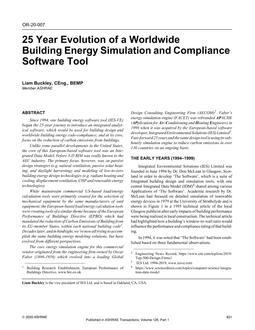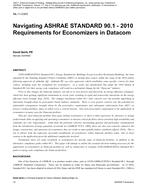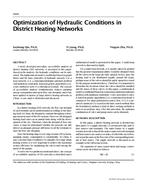Variable Refrigerant Flow (VRF) heat pumps are increasingly used in commercial buildings in the United States. Monitored energy use of field installations have shown, in some cases, savings exceeding 30% compared to conventional heating, ventilating, and air-conditioning (HVAC) systems. A simulation study was conducted to identify the installation or operational characteristics that lead to energy savings for VRF systems. The study used the Department of Energy EnergyPlus™ building simulation software and four reference building models. Computer simulations were performed in eight U.S. climate zones. The baseline reference HVAC system incorporated packaged single-zone direct-expansion cooling with gas heating (PSZ-AC) or variable-air-volume systems (VAV with reheat). An alternate baseline HVAC system using a heat pump (PSZ-HP) was included for some buildings to directly compare gas and electric heating results. These baseline systems were compared to a VRF heat pump model to identify differences in energy use.
VRF systems combine multiple indoor units with one or more outdoor unit(s). These systems move refrigerant between the outdoor and indoor units which eliminates the need for duct work in most cases. Since many applications install duct work in unconditioned spaces, this leads to installation differences between VRF systems and conventional HVAC systems. To characterize installation differences, a duct heat gain model was included to identify the energy impacts of installing ducts in unconditioned spaces. The configuration of variable refrigerant flow heat pumps will ultimately eliminate or significantly reduce energy use due to duct heat transfer. Fan energy is also studied to identify savings associated with non-ducted VRF terminal units.
VRF systems incorporate a variable-speed compressor which may lead to operational differences compared to single-speed compression systems. To characterize operational differences, the computer model performance curves used to simulate cooling operation are also evaluated.The information in this paper is intended to provide a relative difference in system energy use and compare various installation practices that can impact performance. Comparative results of VRF versus conventional HVAC systems include energy use differences due to duct location, differences in fan energy when ducts are eliminated, and differences associated with electric versus fossil fuel type heating systems.
Citation: ASHRAE Conference Papers, Denver, CO
Product Details
- Published:
- 2013
- Number of Pages:
- 8
- File Size:
- 1 file , 590 KB
- Product Code(s):
- D-DE-13-C071


